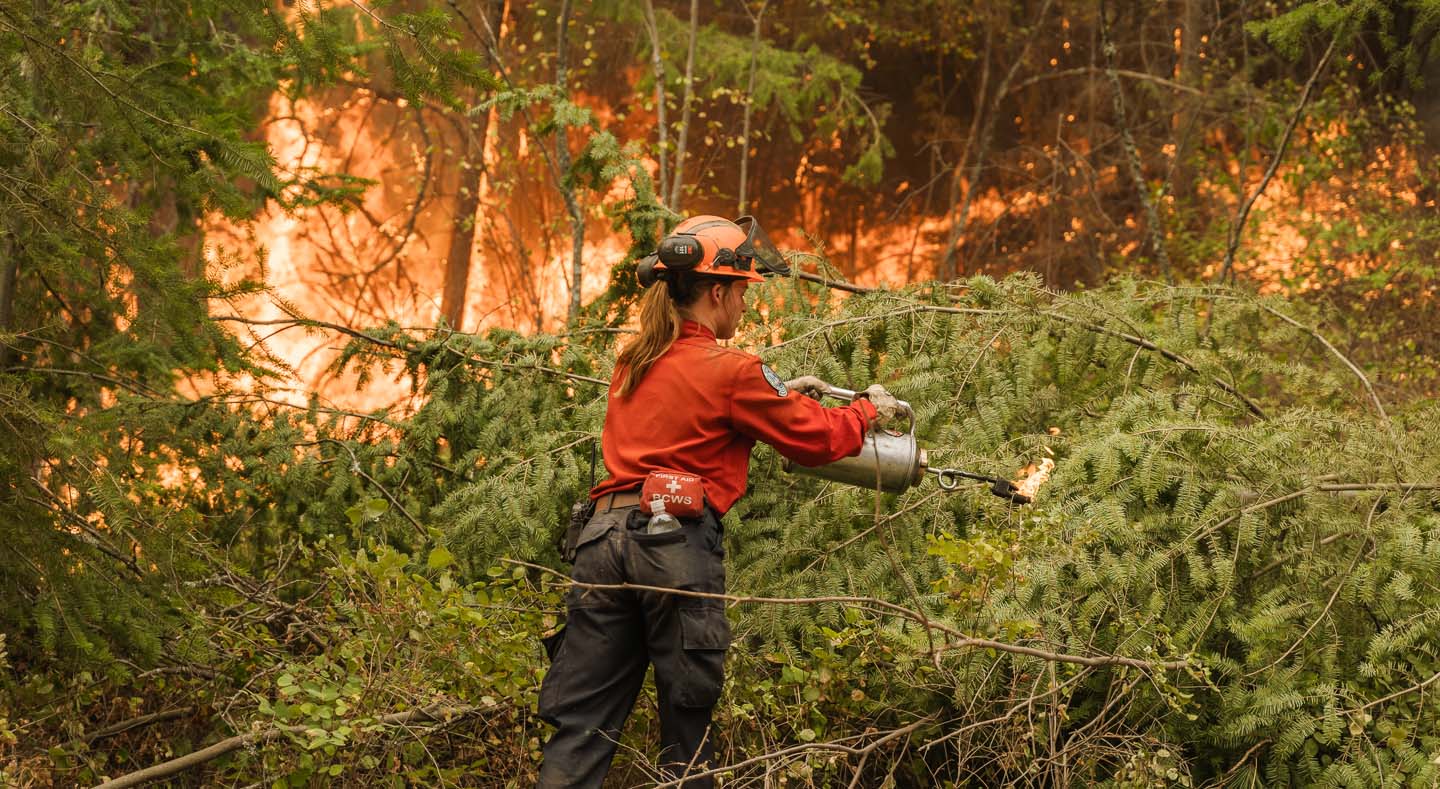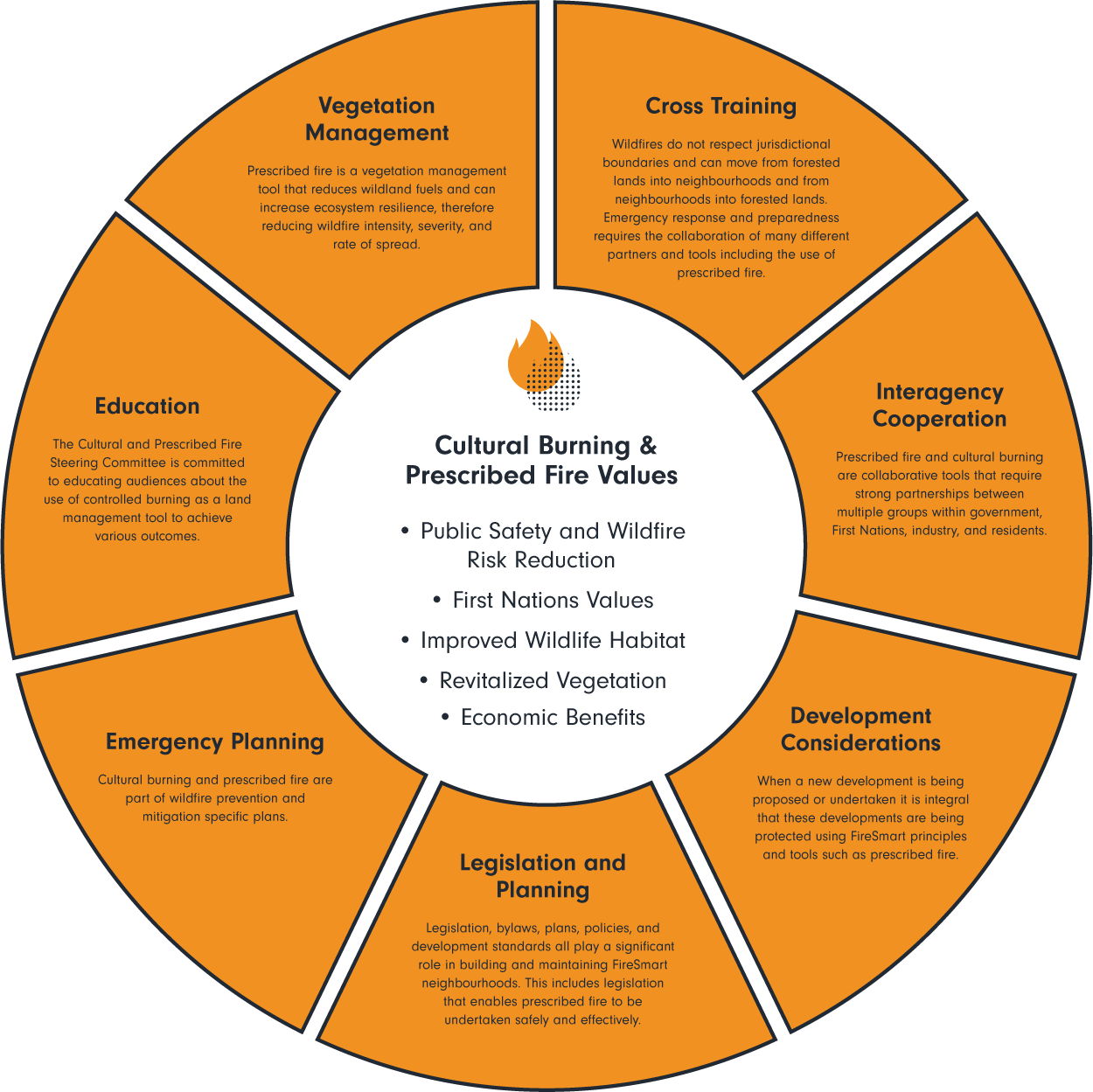What is Prescribed Fire?
Prescribed fire is the planned and controlled application of fire to a specific land area and is one of the most ecologically appropriate and relatively efficient means for achieving planned public safety and resource management objectives, for example to enhance a habitat, prepare an area for tree planting or, for disease eradication.

After many years of fire suppression, an ecosystem that needs periodic fire becomes unhealthy.
Trees are stressed by overcrowding; fire-dependent species disappear; and flammable fuels build up and become hazardous. The right fire at the right place at the right time can help achieve a number of different objectives and bring balance back to our forests.
Prescribed fire can also contribute to achieving air quality and climate action targets by preventing large, intense wildfires and replacing them with more frequent, well-timed, well-planned low-intensity fires.
Cultural burning & prescribed fire: how they support the 7 FireSmart disciplines

CULTURAL BURNING
A practice rooted in history
Indigenous communities have in many ways been leading wildland fire mitigation and prevention in Canada since time immemorial.
Cultural burning on the homelands shaped the lives of humans, plants, animals, and Mother Earth herself. Through repeated burning practices, the Indigenous Peoples of the land were able to shape their own environment to their own specific needs.